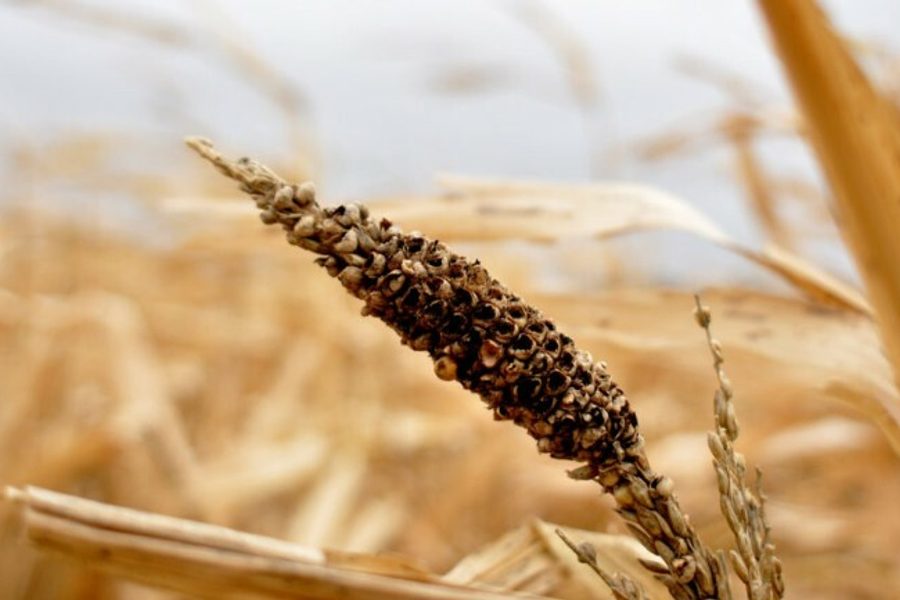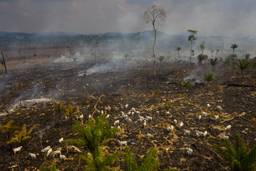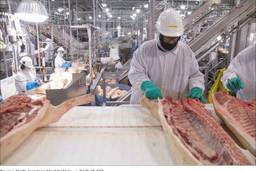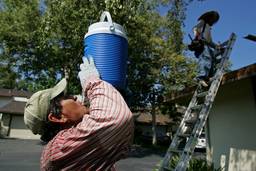New Trump Budget Proposes Big Cuts to Crop Insurance and Emergency Aid to Farmers
Christopher Walljasper

Editor’s Note: This story was originally published on The Midwest Center for Investigative Reporting.
Crop insurance and other farm support programs are set to receive big cuts in President Trump’s proposed 2021 budget.
The President’s proposed 2021 budget, released on Feb. 10, slashes spending on crop insurance, commodity purchases and emergency aid to farmers facing natural disasters―three sources that contributed to nearly a third of farm income in 2019.
“Donald Trump has repeatedly expressed his appreciation for and dedication to American farmers,” said Roger Johnson, president of the National Farmers Union in a statement. “Yet year after year, his budget has failed to address the very real economic challenges facing rural communities. There are a number of programs and agencies that can help farmers and rural residents with these difficulties―including the Conservation Stewardship Program, the Agricultural Research Service, and the Supplemental Nutrition Assistance Program―but the Trump administration is looking to cut funding from all of them.”
The President’s proposed budget is unlikely to pass both houses of Congress in its current form, Sen. Sheldon Whitehouse (D-RI) told Reuters in an interview.
In 2019, farmers across the country faced challenges planting, replanting and harvesting as volatile weather pummeled growers from North Dakota to Ohio. Farmers were unable to plant more than 19 million acres, up from 1.9 million acres in 2018, according to U.S., Department of Agriculture data.
Crop insurance indemnities reached $8.7 billion for 2019, according to data published by USDA’s Risk Management Agency on Jan. 27. That’s up 51% from 2018, and more than double payouts from the 2017 crop year.
“The past year has brought serious economic damage to farmers and rural communities, yet the Administration is proposing to cut billions in programs that they count on in many different ways,” said U.S. Rep. Collin Peterson (D-MN) in a Feb. 11 statement. Peterson serves as the Chairman of the House Committee on Agriculture.
Adding in USDA’s $16 billion Market Facilitation Program, designed to offset ongoing trade wars, and $4.5 billion in disaster relief for farmers, 2019 saw payouts of more than $20 billion above traditional farm safety net programs such as federal crop insurance.
Trump’s 2021 budget would cut crop insurance by $12 million the first year, then balloon, slashing between $2 billion and $3 billion each year through 2030. In all, the document claims it’ll reduce crop insurance payments by nearly $25 billion in the next decade.
The budget also promises to save $9.1 billion over ten years by streamlining conservation programs, $6.4 billion by eliminating redundant Farm Bill Programs, and nearly $2.7 billion by tightening farm payment eligibility.
These moves are not new. Trump’s budgets from the past two years have included similar provisions, though none as deep as this current draft.
The budget also outlines support for rural hospitals and expanded broadband internet access, while cutting funding to programs that dole out government-backed loans for expanding internet and healthcare access in remote parts of the country.
Deficit double-speak
The document, titled “A budget for America’s Future,” speaks to fiscal responsibility, calling the rising federal deficit “unsustainable.”
“The 2019 deficit was $985 billion — the largest since the Great Recession — and will climb above $1 trillion this year and for years after,” according to the documents. “Such high and rising debt will have serious negative consequences for the budget and the Nation.”
The 2021 budget then sets forth a series of vague ways in which the administration aims to streamline agencies, reduce inefficiencies and stop “wasteful and unnecessary spending.”
The budget would increase spending by $100 billion more than the 2020 fiscal year, to $4.8 trillion in 2021.
“This is what happens when ideologues decide to cut programs just for the sake of cutting,” said Peterson. “We will make sure that the farm bill isn’t cut during this year’s budget process. What’s worse is the President is proposing all these cuts without any attempt to balance the budget.”
Secretary of Agriculture, Sonny Perdue praised the budget in a statement.
“President Trump’s budget continues to reign in an overgrown Federal government with fiscally responsible cuts in spending,” said Perdue. “USDA is doing its part to improve our customer service while reducing our economic and regulatory impact. We will continue to serve and deliver our programs on behalf of America’s farmers, ranchers, producers, foresters, and the food insecure with improved customer service and respect for taxpayer dollars.”
Fraying the farm safety net
The document seems to acknowledge the need for farm safety programs, even as it calls for their reduction.
“Farmers are experiencing high levels of financial stress due to challenging market and growing conditions. To help farmers survive the market shocks, the Administration has provided $28 billion in trade mitigation assistance and $5.7 billion in supplemental and ad hoc disaster assistance (2018 and 2019). This unprecedented level of support underscores the President’s commitment to the Nation’s farmers and ranchers.
“In total, roughly one-third of farm income will come from Government payments and crop insurance benefits this year. As a result, USDA is projecting that farm income will rise for the third year in a row,” the budget said.
One notable absence from the 2021 budget was any caps to underwriting gains by private crop insurance companies. A 2017 report from the Government Accountability Office said insurance companies’ profits “averaged $1.3 billion per year for 2011 through 2017.”
Those profits are subsidized by the USDA’s Risk Management Agency, and are locked in by Congress through the Farm Bill.
“The negotiated rate of return was 14.5%, at least 3.5% higher than market conditions would suggest it should be,” said the GAO in its report.
By lowering the guaranteed rate of return for insurance companies, GAO said the agency could save an estimated $364 million each year.
Divestment in rural America
In addition to proposed cuts to safety nets for farmers, the President’s budget sends mixed messages on funding for rural healthcare and access to reliable broadband internet access.
“The Budget includes proposals to address the healthcare needs of rural America. The Budget proposes to expand access to telemedicine services,” the budget explained.
Digging into the document, line items for “expand(ing) and enhanc(ing) access to Medicare telehealth services” and “preserv(ing) access to rural emergency hospitals” receive no additional funding in the budget. Nearly $1.8 billion is removed from the rural healthcare expenditures by 2030 through “moderniz(ing) payments for rural health clinics.”
The budget said the USDA will fund $690 million in telecommunications loans and continue “implementation of the Rural e-Connectivity Pilot Program to foster thriving agricultural economies.” But it also plans to make cuts to USDA’s Rural Business Service Programs, citing one program viewed as wasteful.
“These programs have spent over a billion dollars during the last 10 years supporting already successful businesses that could qualify for private sector capital,” according to the document. “For example, the Value-Added Producer Grant program has provided over $3 million to wineries and vineyards in 2018, including grant funding to promote wine slushies.”
These programs also provide loans for biofuel producers, broadband for rural communities left out by private sector providers and telemedicine grants.
The Midwest Center for Investigative Reporting is a nonprofit, online newsroom offering investigative and enterprise coverage of agribusiness, Big Ag and related issues through data analysis, visualizations, in-depth reports and interactive web tools. Visit us online at www.investigatemidwest.org






